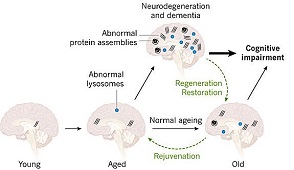What does the future of pharma look like? So far, our task was easy, a description of history. Now things become much more difficult. There is a multitude of subjects on the agenda. Like the health gains that we jeopardized because we used irresponsibly very good medicines. Like nasty infections that were prevalent 100 years ago and now pop up again. We still cope with conditions like cancer, we don’t succeed in controlling them; we even may be on the wrong track in its treatment. Dementia and Alzheimer become more important all the time. And yet our capabilities extend far and wide. Take as an example the speed at which the vaccines for Covid-19 became available. But there is one problem that we do not solve, even though the solution is well within our reach: provide our inventory of medicines to each and every one on this planet.
Project ‘100 years of antibiotics’
Episode 67. Technological development, major changes
Episode 68. Limits to healthcare
Episode 69. The future of pharma in 3 acts, no.1. More of the same
Episode 70. The future of pharma in 3 acts, no.2. Biology’s promises
Episode 71. The future of pharma in 3 acts, no.3. Towards a holistic approach

Profit, for whom?
Before Italy became a member of the European Union, it didn’t allow patents on medicines. The rationale being that it is unethical to make money over the backs of people taken ill. This resulted in a flourishing Italian medicines industry. Anyone could copy and use discoveries made by others, without running into legal procedures. The pharmaceutical majors of that era complained a lot, but finally played their part in this game. Profit margins ran into the double figures and the image of big pharma as a greedy money-maker receded in view of the major gains in health and quality of life.
In the past two decades of the past century, that image changed, particularly in the eyes of the public. Profit margins in major companies now are around 10% or lower, prices have been elevated to (at times) ridiculous levels, and therapeutic gain of many new medicines is shaky. We suppose that considerations in the boardrooms will often be:
– development costs of new medicines rise all the time
– and so do development times, until the medicine starts to make a profit (where is our new blockbuster?)
– demands of governments and insurance companies become stricter all the time
– generic medicines, particularly those from India and China, force us again and again to the exploration of new and uncertain markets
– the researchers paint fantastic vistas, but how do we raise the billions required to process those vistas into medicines.
Health gain by pharma
We do not come across the words health gain in these considerations. Even though the cheap generic medicines from Southeast Asia opened up medicines use for many people: from about 2 billion in 1980 to more than 6 billion in 2020. They did so through their own competitive power, not because we moved there the expensive Western factories. ‘We cannot afford to buy ready-made medicines in the US, Europe or Japan. We can do better: produce them ourselves. We can cover many initial costs from sales in our big home markets; and we can boost our economies by selling our products on Western markets.’ Big pharma hardly devotes (and devoted) any attention to the supply of basic medicines to the world’s poor. Generic industries did so (for them, for us). But what could be the problem if we decided to make available 5% of each budget devoted to Alzheimer’s disease, to the production of existing medicines? For poor countries chosen by the UN, or for conflict areas?

Fear of death
Messages about people becoming older than 100 years have had somewhat less attention recently, as Covid-19 was predominant in the news. But it is still a theme: our children and grandchildren may hope to become 125 or even 150 years old. Not amazingly so, for there is much fear of death; it even looks like it is being kept alive. Check our 2018 columns on healthy-aging-and-the-science-of-living-forever. Many subjects are being researched in this field. Projects like Healthy Ageing (for instance in the Netherlands), that prioritize quality of life as we grow older. Down to research on longevity in pets in the US; suggesting that in case of good results, we can move on to apply these on their masters. This resembles more like a business model than like a search for better health options. Ageing people are a very interesting target group for health economists. They number up to 80 or 90% of those buying their products; and they can afford to do so, making them a prime target for plans for the future. Remember, we spend 90% of all expenses on healthcare in the last 10% of our lifetimes.
Take the study Visualizing the Future of the Pharma Market (visualcapitalist.com). It points out right in the beginning that global population will number more than 2 billion people aged over 65 in 2050. In the US, the actual target of the study, the number of over 65 year olds will be over 100 million; more than 25% of the population. Global sales of medicines passed the $1000 billion mark last year (2021); according to this study, sales might even amount to $1250 in 2024. Sales grow at some 6% annually; although this is modest in comparison with the past 50 years.
 Anti-cancer medicines
Anti-cancer medicines
Anti-cancer medicines attract by far the largest share of attention in the development of new medicines. This is the largest segment of the global pharma market already: 15% in 2021, and expectedly even 20% in 2024. Followed by medicines against rheumatism (stable at 8%), against diabetes (from 6 to 5%) and anti-viral medicines (down from 5 to 4%; but this study was done before the Covid pandemic broke out!). For the coming years, the authors of this study expect the largest growth in anticancer medicines (over 12% p.a.), and in connection with this, medicines against skin conditions (also over 12% p.a.). Medicines that suppress the immune system even score a bit higher (plus 15% p.a.). Caused by the expected rise in organ transplants. In none of the other categories, expected annual growth exceeds 10% p.a.
The large number of anticancer medicines is telling; both medicines on the market already, and those still in the pipeline. According to this study: more than 4,000 medicines are on the market and over 5,000 in the pipeline. No other medicine category even comes close to these numbers. But the numbers are also telling about the amount of anti-cancer activity. The study concludes with the prediction that in 2024, of all prescription medicines, for each $5 devoted to medicines, $1 will be for the treatment of cancer. More of the same!
